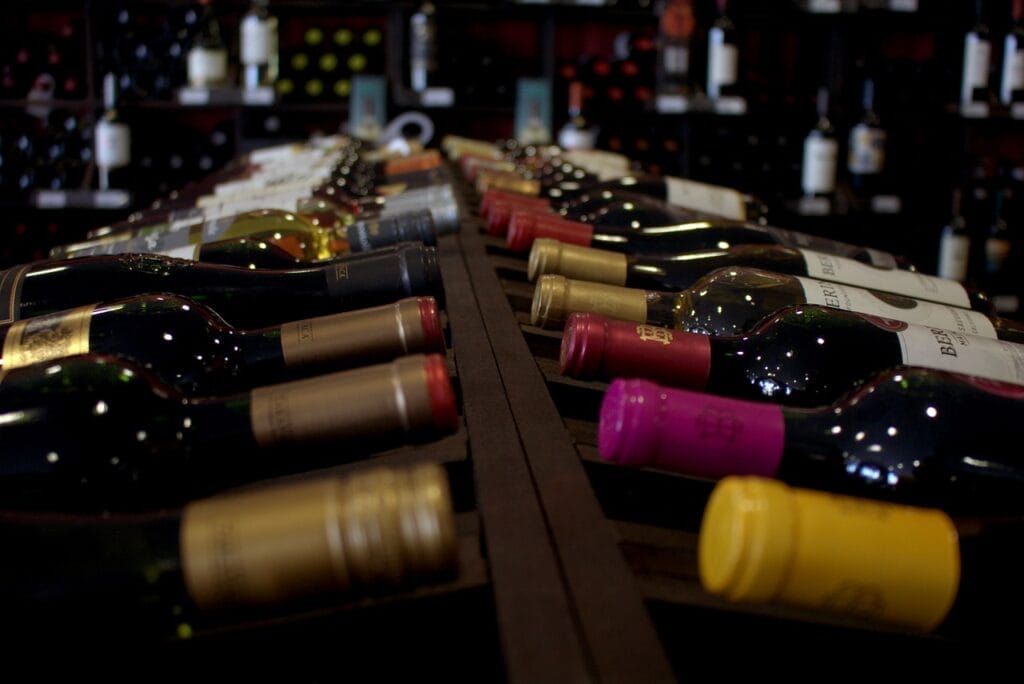Are you wondering how many calories are present in your bottle of Chardonnay?
Never fear – we have the answer right here in this article!
The calories in your bottle of Chardonnay are derived from both the alcohol and sugar content, which together will influence the overall number of calories that are present. The number of calories in your wine will also of course depend on your serving size!
In this article, we will take a closer look at the calories contained in a bottle of Chardonnay and how exactly this amount is determined. We will cover:
- The basics of understanding the calories found in wine
- The calorie count of a bottle of Chardonnay and how this compares
- What factors affect the calories in Chardonnay
- How to select a low-calorie bottle of Chardonnay.
Let’s begin!

Understanding Wine Calories: The Basics
Before we look at exactly how many calories are in a bottle of Chardonnay, let’s first take a look at how the calorie content of wine is determined.
Wine is created with grapes, which are pressed and crushed into grape juice. In the wine-making process, the sugar in this grape juice is eaten by yeast to create alcohol through the process of fermentation.
This alcohol contains the bulk of the calories found in wine, with every gram of alcohol containing 7 calories.
Therefore, the higher the percentage of alcohol in your wine, the higher the calorie content!
Sugar that is not transformed into alcohol is referred to as residual sugar, and this makes up the remainder of the calorie content.
The calorie difference between white and red wines is also often compared. While the difference is not large, red wines tend to have more calories because they tend to have slightly higher alcohol content across the board.
Calories in a Bottle of Chardonnay: The Numbers
Now that we understand exactly where the calories in wine come from, let’s take a look at the exact amount contained in Chardonnay.
A typical small 125ml serving of Chardonnay contains between 100-120 calories. This amounts to approximately 220 calories per 250ml serving or 660 calories in a standard 750ml bottle of Chardonnay.
To provide some context, let’s compare these numbers to some other common foods and drinks and see how Chardonnay stacks up.
A 250 ml serving of Coca-Cola amounts to approximately 108 calories. In comparison, 250 ml of Chardonnay has 220 calories, which is over twice as many calories!
250 ml of full cream milk contains approximately 159 calories, while 250 ml of orange juice contains 118 calories. Again, Chardonnay contains a significant amount more than both of these beverages.
What about food? Let’s make some more comparisons to see how a glass of Chardonnay stacks up against some common snacks!
One Hersey chocolate bar contains the same amount of calories as a 250 ml serving of Chardonnay (approximately two standard glasses). A 125 ml glass of Chardonnay also has the same number of calories as a medium banana.
If you prefer a savory treat, a 125 ml standard glass of Chardonnay contains about the same amount of calories as 15 almonds or a small handful. As you can see, those calories in your wine glass can add up pretty quickly!
Factors Affecting Calories in Chardonnay

That being said, the number of calories in Chardonnay can differ from bottle to bottle.
Let’s take a look at why this is the case and the factors that may affect the calorie content in Chardonnay!
Alcohol Content
The amount of calories in a bottle of Chardonnay is significantly affected by the alcohol content of the wine.
This is because sugars in the grape juice are converted to alcohol in the wine-making process, and these contain calories.
Therefore, the higher the alcohol content of your wine, the higher the calorie count of the wine will likely be.
Residual Sugar
You will also need to consider the residual sugar content of your wine (the amount of sugar left in the wine that was not converted to alcohol).
The amount of residual sugar will also affect the calorie content and needs to be considered in conjunction with the alcohol content.
Wines that are dry will therefore have a lower calorie count overall than sweet wines, but this is also dependent on the alcohol content.
When looking for a dry wine, you want to look for a wine that has between 1 to 10 grams of residual sugar per liter.
In contrast, a sweet wine will have between 35-120 grams of residual sugar per liter.
Some very sweet wines even contain up to 120-220 grams of sugar per liter – double the amount of Coca-Cola! As such, it’s best to steer clear of sweet wines if you’re watching your calories.
Wine Making Techniques
There are two main methods used for making Chardonnay: oaked and unoaked. So, what’s the difference between the two?
Oaked Chardonnay is aged in oak barrels and gives the Chardonnay a more buttery flavor with less acidity.
This occurs through the process of malolactic fermentation, where malic acid in the grapes gets transformed into lactic acid.
In contrast, unoaked Chardonnay is aged in stainless steel barrels and isn’t subjected to this process – instead retaining crisp acidic flavors.
The method used to make the Chardonnay does not usually have a significant effect on the overall resulting calorie content, as that is largely dependent on the amount of sugar and alcohol in the wine.
Selecting a Low-Calorie Chardonnay

As Chardonnay is classified as a dry wine overall with lower levels of residual sugars, the main thing you want to look for to find a lower-calorie Chardonnay is the alcohol content.
Take a look at the back of wine bottles for the label which will give the ABV or Alcohol By Volume value.
When it comes to Chardonnay, ABV typically ranges from 11-14 percent. The wine label will also tell you the number of grams of sugar in the bottle per serving; in this case, the lower the better!
When looking for low-calorie Chardonnays, you may often find bottles that are already labeled as low-calorie – making for an easier and straightforward shopping experience.
A great low-calorie Chardonnay is Kendall-Jackson’s Low Calorie Chardonnay.
This affordable wine contains only 85 calories per serving and 0 grams of residual sugar.
For a truly low-calorie Chardonnay, you could also choose an alcohol-free variety such as Thomson and Scott Noughty Sparkling Chardonnay at only 18 calories per serving.
Also Read: Calories in a Glass of Pinot Grigio: Nutritional Breakdown
Conclusion
In summary, the calorie content of Chardonnay will depend on the amount of sugars and alcohol contained in the wine!
Alcohol contains 7 calories per gram of alcohol, and residual sugars will add to this calorie count.
Therefore, when selecting a low-calorie wine you’ll want to look for a dry wine (between 2 – 10 grams of sugar) with a low alcohol level (the ABV reading on the label).
Look for an alcohol level closer to 11% ABV; however, for a very low-calorie option, you can always select an alcohol-free bottle as well!
Also Read: Barefoot Wine Alcohol Content: Know What’s in Your Glass
FAQs
Chardonnays that have the least amount of calories are those that have low levels of alcohol and low levels of residual sugar.
Look for Chardonnay that has a lower alcohol content, and that has a sugar level of between 2-10 grams per liter for the lowest calorie content.
Oaked and unoaked Chardonnay do not differ significantly in their calorie content, this will depend on the alcohol and sugar content.
Which one is better will depend on your taste preferences, with oaked Chardonnay being more buttery and unoaked more acidic.
Oaked Chardonnay is aged in oak barrels, and results in a more buttery flavored wine through the conversion of malic acid to lactic acid.
In contrast, unoaked Chardonnay is aged in stainless steel barrels and has more acidic and tart flavors.
While the price of Chardonnay doesn’t directly influence its calorie content, higher-priced Chardonnays often have unique production methods that can impact their nutritional profile. To explore a variety of Chardonnays that fit your budget and taste preferences, check out our guide on best chardonnay wine.
- Moscato vs Roscato: A Comprehensive Comparison of Sweet Wines - December 15, 2023
- Should White Wine Be Chilled? Expert Insights on Serving Temperature - December 14, 2023
- Moscato vs Riesling: A Sweet Wine Showdown - December 8, 2023




![Moscato vs. Chardonnay: 10 Key Differences [2023] Moscato vs Chardonnay](https://e25kn4v6x6d.exactdn.com/wp-content/uploads/2023/09/Moscato-vs-Chardonnay.jpg?strip=all&lossy=1&resize=150%2C150&ssl=1)





